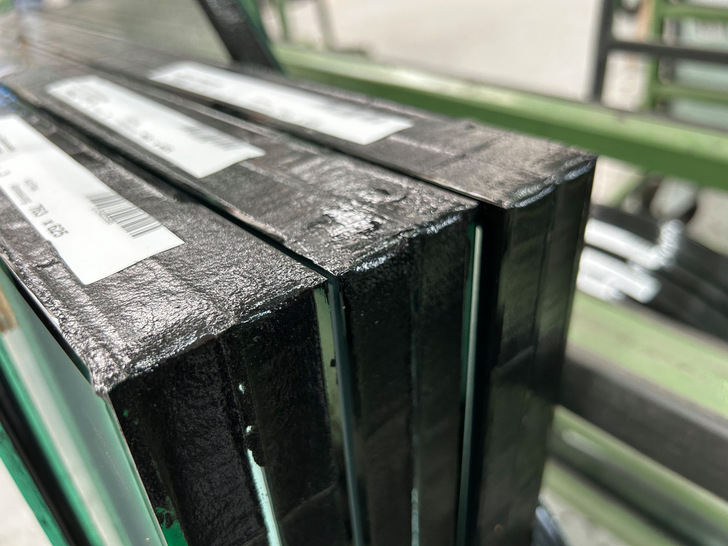In the case of insulating glass windows and doors, the term is also used across the board for improved thermal insulation around the glass recess on the sash element. Until the 1990s, spacers made of aluminium were predominantly used for insulating glass. Since aluminium conducts heat well, the edge of the pane cooled down considerably at low outside temperatures. This cooling at the edge happens a lot less with the newer spacers with low thermal conductivity and is therefore referred to as a warm edge.
Why is the warm edge better?
The thermal insulation in the transition area from the glass to the frame is significantly influenced by the thermal conductivity of the insulating glass spacer, which connects the two or three individual panes at their outer edges to form the insulating glass unit. Together with a surrounding secondary seal, the spacer also seals the space between the panes to the outside.
How has the market for warm edge systems developed recently?
The introduction of thermally improved spacers accelerated with the Energy Saving Ordinance (EnEV) of 2002 in Germany - as well as similar legislation in other countries - which require that the thermal properties of spacers be considered in calculations. Based on DIN EN ISO 10077-1, not only the heat losses from transmission via the glass and the frame but also the heat losses via the insulating glass edge seal are factored in when determining the heat transfer coefficient for the entire window.
Further reading:
Joint study by Dow and Swisspacer: Warm Edge IG units at the highest level
Warm edge for the Parnas Tower in Seoul
Warm edge spacer system for structural glazing and XXL glass panes













